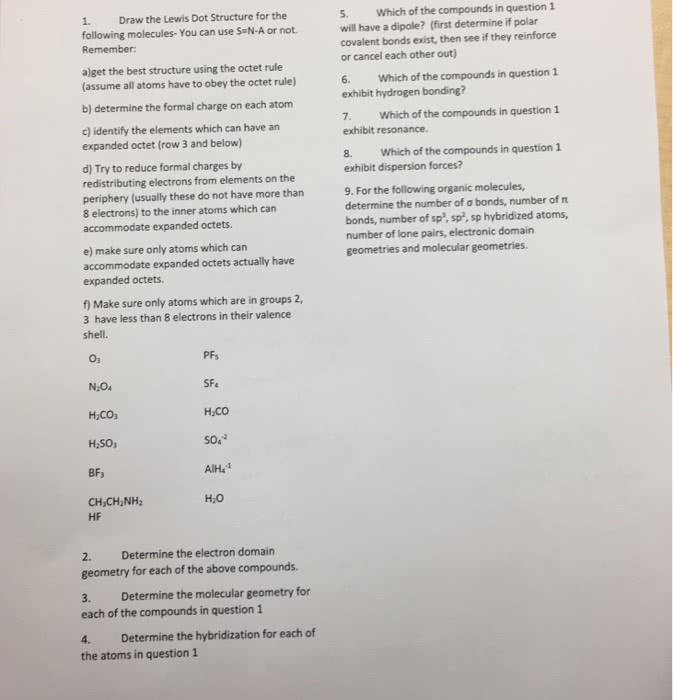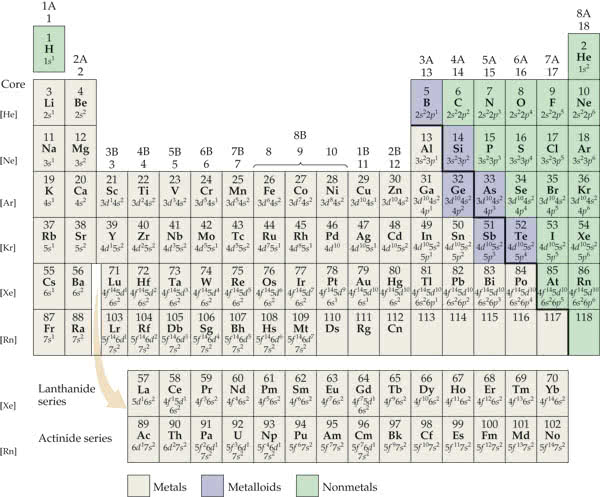CHE 110 Lecture Notes - Lecture 9: Ionic Compound, Fluorine, Ionic Bonding

Chapter 9: Chemical Bonding I – Basic Concepts
I. Valence Electrons
a. Valence Electrons: the electrons in the outermost shell of the electron
i. Chemists are only interested in the outermost shell of electrons because
these are the ones that result in making compounds
b. Determining # of Valence Electrons in an atom
i. The column number on the Periodic Table will tell you how many valence
electrons a main group atom has
1. 1A (ex. Li) 1 e-
2. 2A (ex. Be) 2 e-
3. 3A (ex. B) 3 e-
4. 4A (ex. C) 4 e-
5. 5A (ex. N) 5 e-
6. 6A (ex. O) 6 e-
7. 7A (ex. F) 7 e-
8. 8A (ex. Ne) 8 e-
ii. Transition Elements all have two valence electrons
II. Lewis Bonding Theory
a. Gilbert Lewis developed a system for looking at valence electrons only: ONE DOT
represents each valence electron
b. Lewis Bonding Theory: one of the simplest bonding theories that emphasizes
valence electrons to explain bonding
i. Draw models, called Lewis (Electron Dot) Structures, using theory
ii. Allows us to predict the properties of many properties of molecules
1. Molecular stability
2. Shape
3. Size
4. Polarity
III. How do atoms combine to make compounds?
a. Chemical Bonds: the sharing or transfer of electrons between at least two atoms
leading to the formation of compounds; forms when the potential energy of the
bonded atoms is less than the potential energy of the separate atoms
i. Ionic Bond: the attraction between oppositely charged particles which
are the result of the transfer of electrons between atoms or groups of
atoms
ii. Covalent Bond: the sharing of electrons between two atoms
b. Types of Atoms, their Bonds, and their Bond characteristics
i. Metals nonmetals
1. Ionic
2. Electrons transferred
ii. Nonmetals nonmetals
1. Covalent
2. Electrons shared
find more resources at oneclass.com
find more resources at oneclass.com





